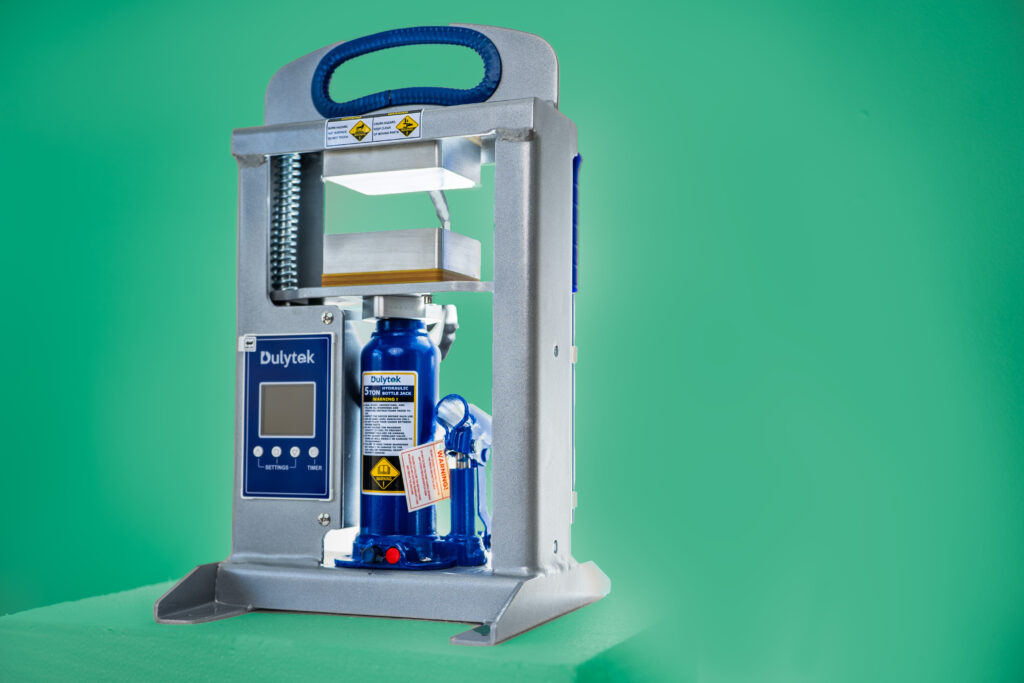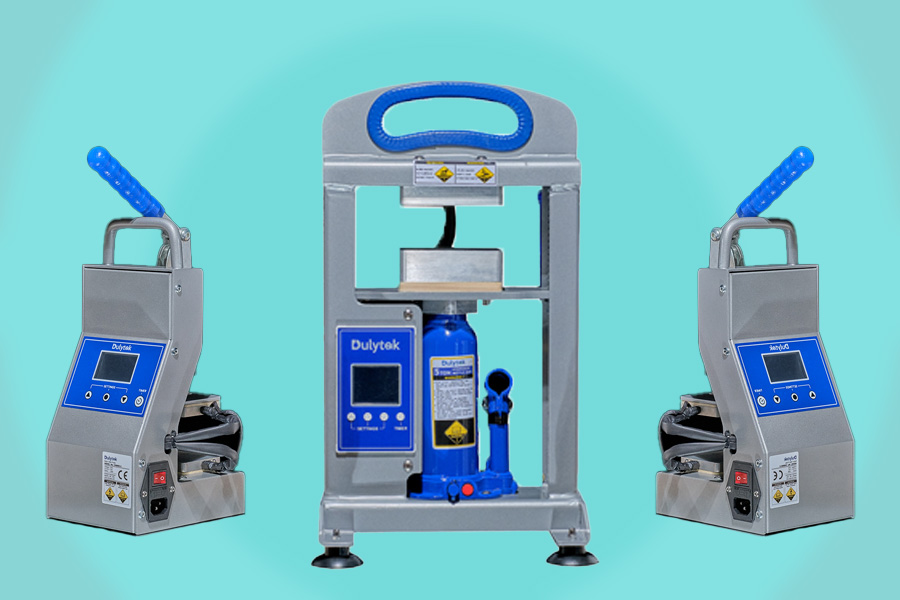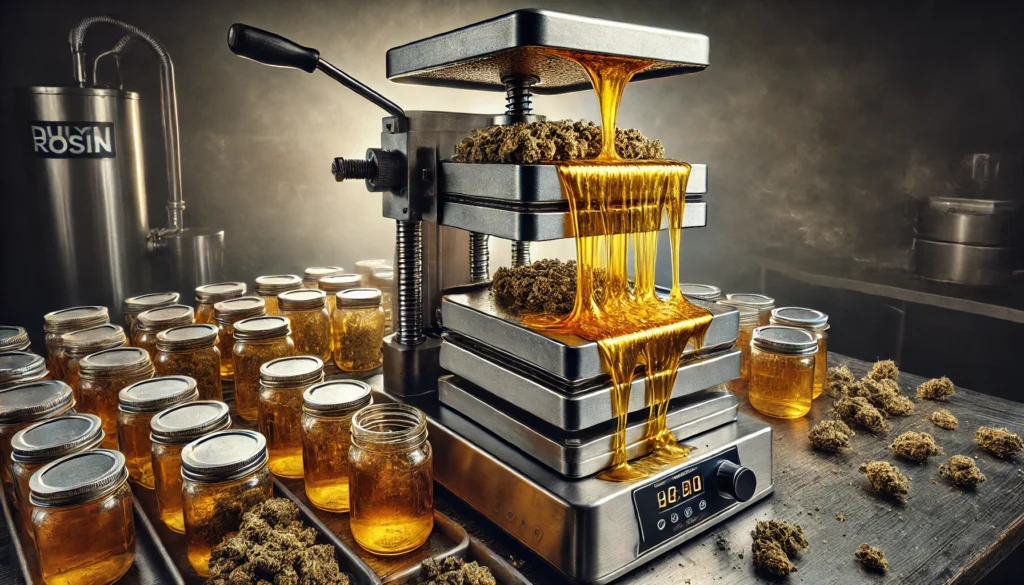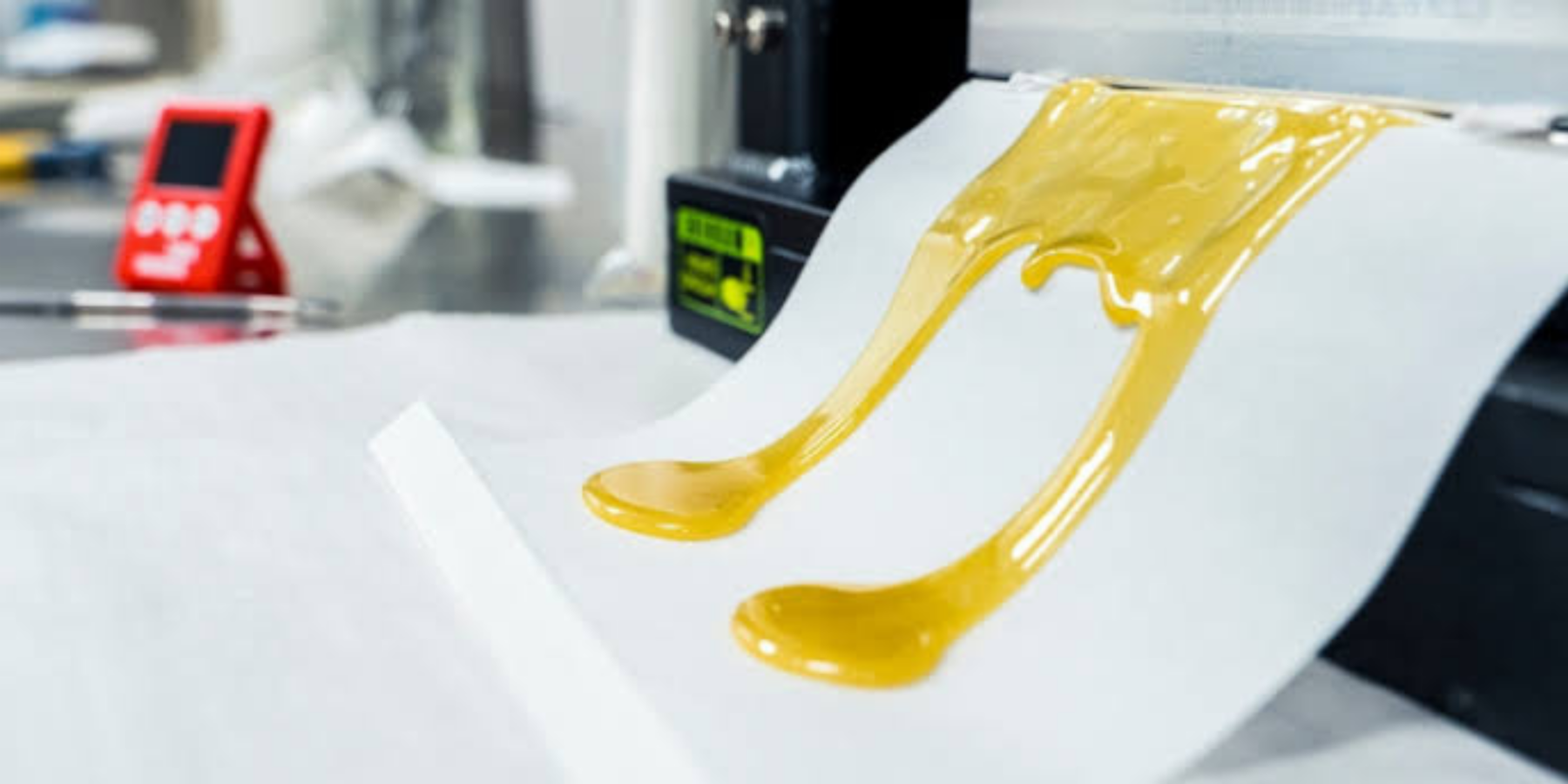Introduction: Why Rosin Pressing is a Great Starting Point for Beginners
Rosin pressing is one of the easiest and safest ways to produce high-quality cannabis concentrates at home. Unlike other methods that require solvents like butane or CO2, rosin pressing uses only heat and pressure to extract the potent oils from cannabis flower, hash, or kief.
This makes it a solventless process, resulting in a cleaner and more flavourful end result. If you’re new to rosin pressing or maybe you’re curious about how to get started, this guide will walk you through everything you need to know.
What is a Rosin Press?

Put simply, a rosin press is a machine designed to apply heat and pressure to cannabis material. The combination of high temperatures and a large amount of pressure results in the resinous oils being squeezed out, which you collect as rosin.
A rosin press will always have a bottom and a top plate. These plates heat up to a predetermined temperature set by the user. Aside from the plates, a rosin press will have some mechanism for applying pressure. Sometimes this is a lever in the case of a manual press, sometimes it’s a hydraulic system activated by a button.
There are several types of rosin presses available, from simple manual models to more advanced electric ones.
- Manual Presses: These require you to apply pressure manually, making them ideal for small-batch, personal use.
- Electric Presses: These offer more control over the process and are better suited for larger batches.
Types of Rosin Presses: Which One is Best for Beginners?

For those just getting started, the type of rosin press you choose can make all the difference in your experience. Here’s a look at the different types, and what they offer:
- Manual Rosin Presses: These are affordable, beginner-friendly, and great for small-scale production. They’re compact, which means they don’t take up much space, but they do require physical strength to operate. If you’re just experimenting, this is a solid starting point.
- Electric Rosin Presses: If you want a bit more convenience and don’t mind spending more, electric presses are fully automated. They control pressure and heat electronically, making the process easier. You simply load your material, adjust the settings, and press a button. Perfect for those who want ease without sacrificing control.
- Hydraulic and Pneumatic Presses: While these presses provide higher pressure and precision, they are typically used by more experienced users or those looking to press larger quantities. Not the best for beginners but something to consider as you grow into rosin production.
How Rosin Pressing Works: A Step-by-Step Guide
Rosin pressing is a simple process, but getting the best results requires an understanding of the right techniques. Follow these basic steps to get started:
- Prepare Your Cannabis: Whether you’re using flower, hash, or kief, make sure it’s properly cured and ready for pressing. Moisture content is important—too dry, and your yield will suffer; too wet, and the rosin won’t extract well.
- Set the Temperature and Pressure: A good starting point for beginners is to set the press between 160°F and 220°F (70°C to 105°C). Lower temperatures preserve more terpenes, resulting in a more flavorful rosin, while higher temperatures can produce larger yields at the expense of some flavour.
- Load Your Material: Place the cannabis between two pieces of parchment paper. Insert it into the press and slowly apply pressure, watching the oil begin to seep out.
- Press and Collect: After pressing for 30 seconds to 2 minutes, depending on your settings, remove the parchment paper and collect your freshly pressed rosin. It should be golden and sticky, ready for dabbing, vaping, or adding to edibles.
Finding the Right Temperature and Pressure

When it comes to pressing rosin, finding the sweet spot between temperature and pressure is key. Too much heat or pressure can degrade the quality of your rosin, while too little will result in a lower yield.
- Temperature: Start with a lower temperature (around 160°F to 190°F) if you’re pressing flower, as this will help preserve the terpenes and ensure a flavorful final product. For hash or kief, slightly higher temperatures (190°F to 220°F) can help produce better results without sacrificing too much flavour.
- Pressure: Most beginners tend to focus more on temperature, but pressure is just as important. Generally, aim for around 600 to 1,000 psi for flower and 300 to 800 psi for hash or kief. As you get more comfortable with pressing, you can experiment with adjusting both.
What Can You Press? The Best Source Material for Rosin
For beginners, it’s important to choose the right material when pressing rosin. Different types of cannabis will yield different results.
Flower
Fresh cannabis flower is the most common starting material for beginners when it comes to pressing rosin. One of the main reasons it’s so popular is its accessibility—you can easily source it or grow your own. When using flower, you don’t need a lot of preparation beyond making sure the buds are properly cured and have the correct moisture content. Moisture control is key—too much moisture will cause steam during pressing, which can lower your yield and quality, while too little moisture will result in dry, crumbly rosin.
A good moisture level for flower is around 60-65% relative humidity. You can use tools like humidity packs or a hygrometer to check the levels before pressing. The quality of the rosin you produce is heavily influenced by the strain and quality of the flower you use. High-potency, resinous strains tend to yield better results. So, whether you’re pressing a small personal batch or experimenting with larger amounts, flower is an excellent material for beginners due to its versatility and ease of use.
Kief
Kief, which is the collection of trichomes (tiny resin glands) from the cannabis plant, can be a great option for rosin pressing. Since it’s already in a concentrated form, you’ll typically get a higher yield compared to pressing flower. Kief is also easier to handle and requires less material to produce a significant amount of rosin. This makes it more efficient, as you’re starting with a higher cannabinoid content in a smaller quantity of product.
Hash
Hash, especially bubble hash, is another top-tier material for rosin pressing. It’s highly concentrated and often yields an even more potent product than kief or flower. However, hash pressing requires a bit more finesse. Hash tends to press at lower pressures and slightly higher temperatures compared to flower, but the exact settings will depend on the grade of the hash.
Tips for Maximising Your Yield and Quality

For beginners, pressing rosin is both an art and a science. To help you get the most out of your material, here are a few tips:
- Use Fresh Material: The fresher the cannabis, the better the yield and quality. Ensure your flower has the right moisture level (around 62% relative humidity) to maximise yield.
- Filter Bags: For finer materials like hash or kief, consider using a filter bag. This will help prevent plant material from contaminating the final product and ensure a smoother, cleaner rosin.
- Pre-Press Moulds: Using a pre-press mould can help pack your material evenly, which leads to more consistent yields and reduces the chance of blowouts.
Why Rosin Pressing is a Cost-Effective Option for Beginners
One of the biggest advantages of rosin pressing is its cost-effectiveness. While the initial investment in a press might seem high, in the long run, producing your own concentrates can save you a lot of money. Store-bought concentrates can be expensive, but by pressing your own rosin, you can get more value out of your cannabis flower or hash. Plus, the solventless nature of rosin pressing means you don’t need to worry about expensive and potentially dangerous extraction chemicals.
Maintaining Your Rosin Press for Long-Term Use
Proper maintenance of your rosin press is crucial for long-term success. Here are some basic tips to keep your press in good working condition:
- Clean the Plates Regularly: After each pressing session, wipe down the heat plates to remove any residual rosin. Keeping them clean ensures consistent heat distribution and prevents build-up.
- Check for Wear and Tear: Regularly inspect the press for any signs of wear, especially if you’re using a manual press. Over time, the mechanisms can wear out and may need replacement or tightening.
- Proper Storage: Store your press in a clean, dry place. Moisture and dust can affect its performance and lifespan.
Conclusion: Start Pressing Like a Pro
Rosin pressing is an accessible, beginner-friendly method for producing top-quality cannabis concentrates at home. With the right equipment and a little practice, you can enjoy the purity and potency of solventless rosin without the need for complicated extraction methods.
Whether you’re using a manual or electric press, following these basic guidelines will help you get the most out of your cannabis and create high-quality rosin every time.

